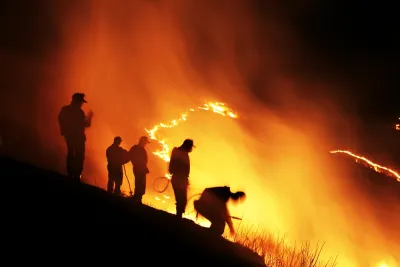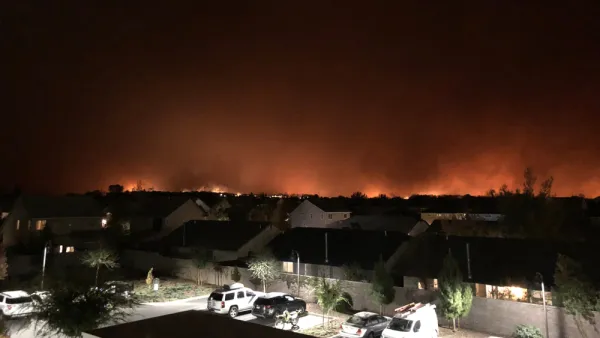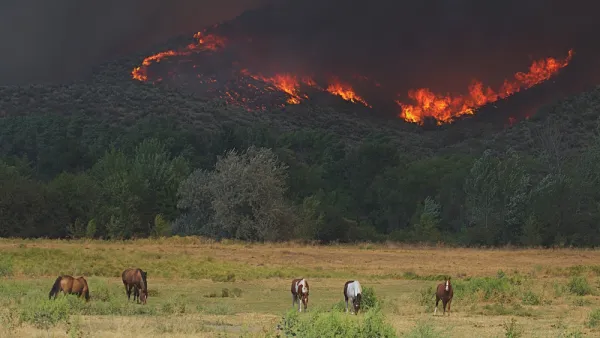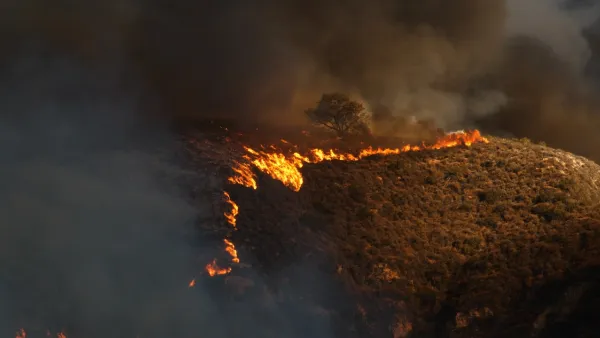The number of annual 'fire weather' days has increased over the past 50 years, leading to deadlier and more massive fires in the West.

A new study from the nonprofit Climate Central found that "fire weather" days–those characterized by the "hot, dry and windy weather conditions" that fuel wildfires–"have increased in frequency over the past 50 years," and will likely continue to do so, expanding fire season and posing increased fire risk. Maanvi Singh writes, "The study’s findings, based on data from weather stations across the region, are consistent with other recent research suggesting that in many parts of the West, increased temperatures from human-caused climate breakdown are leading to more parched summers." The study "found that the number of fire weather days increased steeply in parts of Texas and in California’s interior, and that southern Nevada, southeast California and swathes of New Mexico had the highest number of average annual fire weather days – with nearly a quarter of the year in some regions being characterized as having elevated risk."
In addition to weather, other factors drive the increase in massive fires: "the extreme drought gripping the west, as well as a century of fire suppression, has led to the buildup of dead trees and vegetation that has helped stoke some of the largest fires in region." Meanwhile, "[e]xtreme fire weather has in many cases made it more challenging for firefighters to respond to fire," and "[p]ower companies have begun to turn off electricity to residents in order to avoid equipment-related ignitions – leaving communities without power for medical equipment, refrigeration and, at times, air conditioning." As fire season gets longer and longer, residents must reshape their lives to adjust to the new normal.
FULL STORY: Fire season is getting longer

Analysis: Cybertruck Fatality Rate Far Exceeds That of Ford Pinto
The Tesla Cybertruck was recalled seven times last year.

National Parks Layoffs Will Cause Communities to Lose Billions
Thousands of essential park workers were laid off this week, just before the busy spring break season.

Retro-silient?: America’s First “Eco-burb,” The Woodlands Turns 50
A master-planned community north of Houston offers lessons on green infrastructure and resilient design, but falls short of its founder’s lofty affordability and walkability goals.

Test News Post 1
This is a summary

Analysis: Cybertruck Fatality Rate Far Exceeds That of Ford Pinto
The Tesla Cybertruck was recalled seven times last year.

Test News Headline 46
Test for the image on the front page.
Urban Design for Planners 1: Software Tools
This six-course series explores essential urban design concepts using open source software and equips planners with the tools they need to participate fully in the urban design process.
Planning for Universal Design
Learn the tools for implementing Universal Design in planning regulations.
EMC Planning Group, Inc.
Planetizen
Planetizen
Mpact (formerly Rail~Volution)
Great Falls Development Authority, Inc.
HUDs Office of Policy Development and Research
NYU Wagner Graduate School of Public Service




























